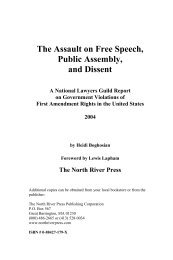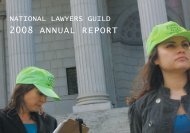legal observer training manual (PDF) - National Lawyers Guild
legal observer training manual (PDF) - National Lawyers Guild
legal observer training manual (PDF) - National Lawyers Guild
Create successful ePaper yourself
Turn your PDF publications into a flip-book with our unique Google optimized e-Paper software.
• Audio recorder<br />
• Camera (disposable cameras are recommended)<br />
On the Day of the Action<br />
• Show up early, a bit before your appointed time<br />
• Check in with the Legal Observer Coordinator<br />
• Get your location assignment and double check it on a map<br />
• Become familiar with any mass transit in the area or arrange for other<br />
transportation<br />
• Exchange cell numbers with Legal Observer Coordinator and other Legal<br />
Observers<br />
• Check in with the Legal Observer Coordinator throughout the day<br />
• At the end of the day, check in with the Legal Observer Coordinator<br />
a. To sign out so they know you are present and out of harm<br />
b. To see if you are needed to go to a precinct or convergence center<br />
c. To surrender to the Legal Observer Coordinator any notes or evidence<br />
you may have collected<br />
During the Demonstration<br />
Take detailed notes, including:<br />
• What law enforcement agencies are present (city, county, state, federal, private<br />
security) and any names and badge numbers you are able to see, especially of those<br />
conducting an arrest<br />
• If you cannot see this kind of identifying information or if there is none, note down<br />
physical descriptions as best you can<br />
• Who is in charge<br />
• Warnings given, who gave them, what they said, how much of it (if any) you can hear<br />
• Routes taken by demonstrators (streets and times)<br />
• What media is present<br />
• Names of people arrested and their conduct (walk, passive, resists)<br />
• Officers' conduct and any special circumstances (force used, injuries, sweeps,<br />
inability of demonstrators to disperse)<br />
If you have a camera, and if your local Legal Observer Coordinator and Legal Team have<br />
asked that you do so, take a few photos to document the scene even before it appears that<br />
the police are intending to take any action with regard to the demonstrators.<br />
If an incident between police and demonstrators occurs, get as close to the scene as<br />
necessary to get a good perspective. A clear angle may be more important than getting<br />
close if your vision will be obscured. If you have a camera, the wider point of view may<br />
in fact reveal more than closer shots that are too narrow.<br />
5


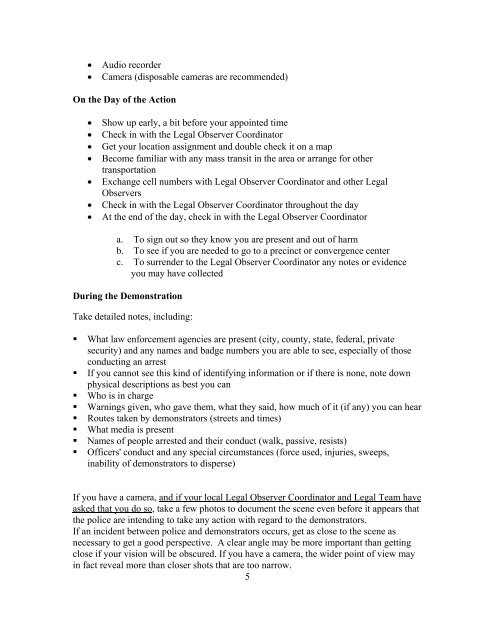


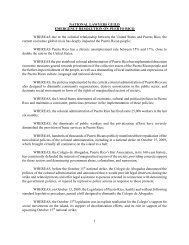
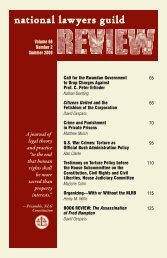
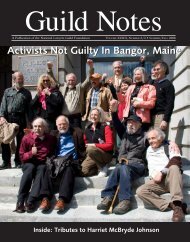
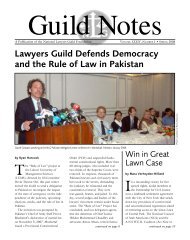


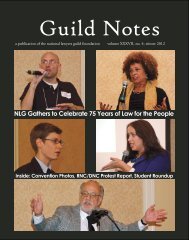

![NLGRev 68-2[1].indd - National Lawyers Guild](https://img.yumpu.com/30820772/1/167x260/nlgrev-68-21indd-national-lawyers-guild.jpg?quality=85)
